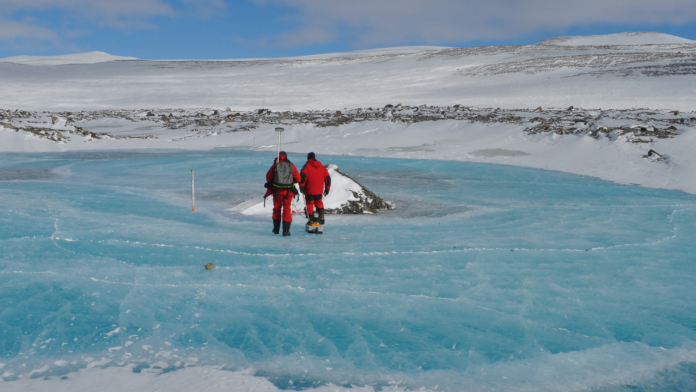by InTrieste
In a groundbreaking discovery that rewrites the climatic history of Earth’s southernmost continent, researchers from the University of Trieste have uncovered evidence of an unprecedented glacial melting event in Antarctica during the so-called Medieval Warm Period. The study, published in the esteemed journal Communications Earth and Environment, reveals that between 900 and 989 years ago, a sudden pulse of warming radically transformed the landscape of northern Victoria Land.
Titled “A warming pulse in the Antarctic continent changed the landscape during the Middle Ages,” the research documents for the first time the dramatic effects of this natural climatic anomaly—an event that caused massive meltwater to carve a four-kilometer-long channel through the glacial surface. At its heart is a striking geological signature: signs of intense fluvial erosion and sediment transport, phenomena never before observed in this region.
The international study is led by Emanuele Forte of the University of Trieste and Mauro Guglielmin of the University of Insubria and the Climate Change Research Center. They are joined by Maurizio Azzaro of Italy’s National Research Council Institute of Polar Sciences (CNR-ISP), Nicoletta Cannone and Alessandro Longhi (University of Insubria), and Ilaria Santin of ETH Zurich.
“This event was extraordinary,” Forte explains. “Unlike today’s melt processes, largely driven by human activity, what we’re seeing here is the footprint of a natural climatic fluctuation—yet the scale of its impact is astonishing.”
The research shows that the sudden influx of meltwater left a visible break in the glacier’s stratigraphy and created a distinct graded sediment deposit—a classic indicator of a decelerating water flow. The presence of such a feature not only helps reconstruct past climate scenarios but also offers new perspectives on the behavior of Antarctic ice in a warming world.
While recent melt events—particularly in East Antarctica and around the Nansen Ice Shelf—have garnered attention, the Medieval Warm Period event stands apart. It occurred during a time of global, naturally occurring climatic change, suggesting that even in the absence of industrial activity, Antarctic glaciers were susceptible to relatively rapid transformation.
The glacier in question, which today remains perennially snow-covered, now offers a rare window into the Earth’s deep climate memory—one that the University of Trieste is helping to unlock, layer by layer.
“This isn’t just about the past,” Forte adds. “Understanding how the Antarctic responded to natural warming centuries ago helps us better model what might come next.”





























